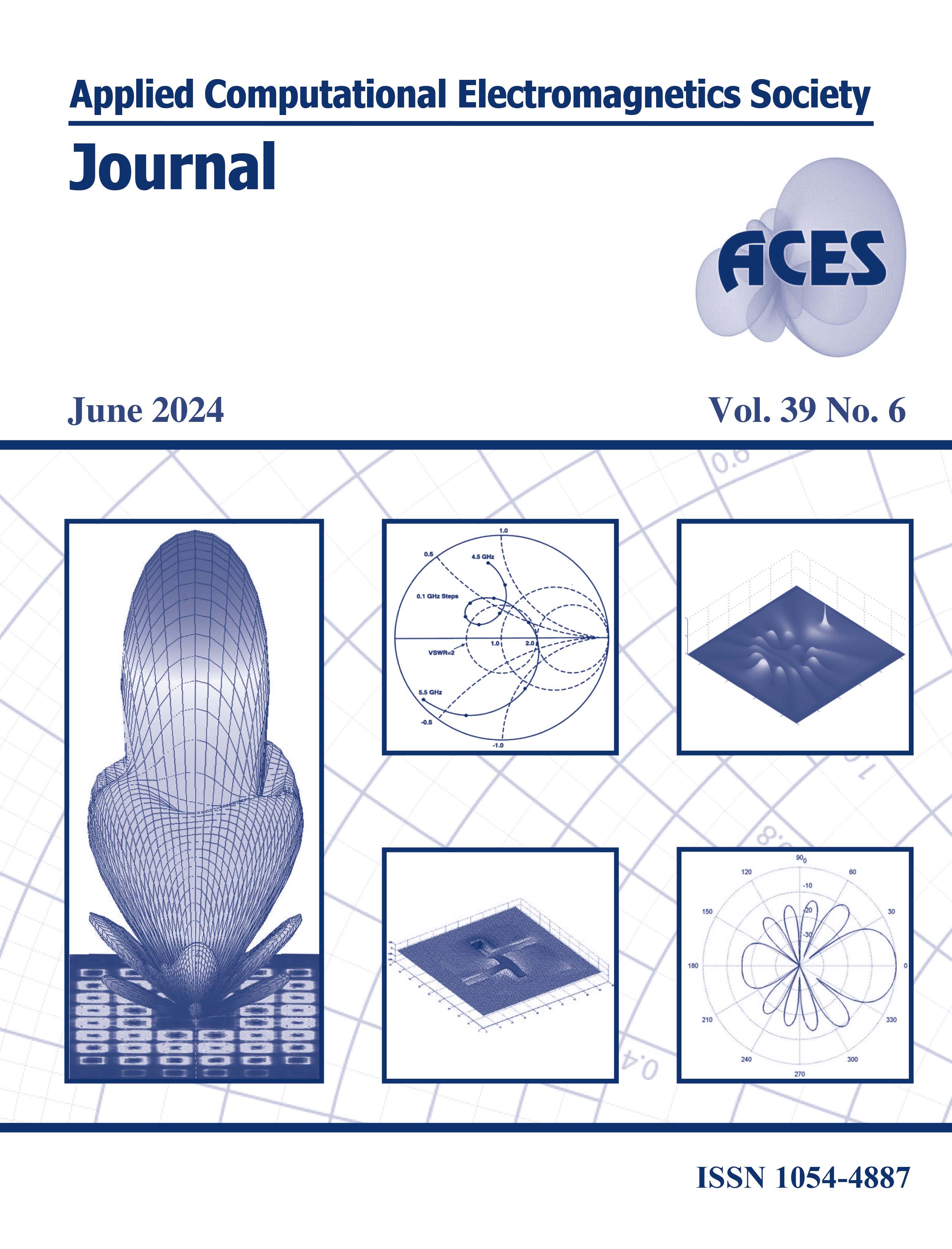Design of a Radar Signature Measurement Model of an Unmanned Aerial Vehicle with Low Radar Signature
##plugins.pubIds.doi.readerDisplayName##:
https://doi.org/10.13052/2024.ACES.J.390602关键词:
radar signature, low observable, measurement model摘要
Existing databases of RCS benchmarks lack a complex, low-observable target. This paper describes the design of such a complex and low-observable measurement model. Starting point of the design is the so-called Muldicon model, developed by the NATO/STO/AVT panel. Hot spots of the original model are identified and treated with radar-absorbing materials. Simulations on the treated model demonstrate that the model is indeed low observable. The effect of the manufacturing process of 3D-printing and separable parts is assessed experimentally on a cone-sphere; the effect is found to be negligible. These results give confidence that the model, when built, satisfies the requirements of being complex and low observable; and that artefacts of the manufacturing process will not impair its signature.
##plugins.generic.usageStats.downloads##
参考
A. C. Woo, H. T. G. Wang, M. J. Schuh, and M. L. Sanders, “EM programmer’s notebook - benchmark plate radar targets for the validation of computational electromagnetics programs,” IEEE A&P Magazine, vol. 34, no. 6, pp. 52-56, 1992.
A. Greenwood, “Electromagnetic code consortium benchmarks,” Technical Report AFRL-DE-TR-2001-1086, Air Force Research Laboratory, 2001.
R. Fernandez-Recio, A. Jurado-Lucena, B. Errasti-Alcala, D. Poyatos-Martinez, D. Escot-Bocanegra, and I. Montiel-Sanchez, “RCS measurements and predictions of different targets for radar benchmark purpose,” in 2009 International Conference on Electromagnetics in Advanced Applications, Turin, Italy, 2009.
J. W. Massey, J. T. Kelley, C. Courtney, D. A. Chamulak, and A. E. Yilmaz, “A benchmark suite for quantifying RCS simulation performance on modern computers,” in Proc. USNC/URSI Radio Science Meeting, July 2018.
J. T. Kelley, A. E. Yilmaz, D. A. Chamulak, and C. C. Courtney, “Increasing the material diversity in the Austin RCS benchmark suite using thin plates,” in Antenna Measurement Techniques Association Symposium (AMTA), Newport, RI,2020.
IEEE Standard for Validation of Computational Electromagnetics Computer Modeling and Simulations, in IEEE Std 1597.1-2022 (Revision of IEEE Std 1597.1-2008), pp. 1-52, 8 Sep. 2022.
R. Nangia, M. Ghoreyshi, M. P. C. van Rooij, and R. M. Cummings, “Aerodynamic design assessment and comparison of the MULDICON UCAV concept,” Aerospace Science and Tech., vol. 93, 2019.
NATO/STO/SET-252 on Development of a validation model of a stealth UCAV [Online]. Available: https://www.sto.nato.int/publications/STO%20Technical%20Reports/Forms/Technical%20Report%20Document%20Set/docsethomepage.aspx?ID=5162&FolderCTID=0x0120D5200078F9E87043356C409A0D30823AFA16F6010066D541ED10A62C40B2AB0FEBE9841A61&List=92d5819c-e6ec-4241-aa4e-57bf918681b1&RootFolder=%2Fpublications%2FSTO%20Technical%20Reports%2FSTO%2DTR%2DSET%2D252
A. Altinoklu, A. K. Ozturk, and M. E. Inal, “Radar cross section reduction for air vehicles based on MLFMA and surface integral equations using RAPID” in Proceedings of ASELSAN REHIS TTEK Conference, Ankara, Turkiye, 2021.
A. Altı
noklu, A. K. Ozturk, E. Sever, and M. E. İnal, “3-D scattering center determination algorithm for detecting primary radar cross-section contributing regions on a radar target,” in Proc. IEEE Int. Symp. Antennas Propag. (APSURSI), Oregon, Portland, July 2023.
E. R. Biglete, M.C.E. Manuel, J. C. Dela Cruz, M. S. Verdadero, J. M. B. Diesta, D. N. G. Miralpez, R. A. C. Javier, and J. I. C. Picato, “Surface roughness analysis of 3D printed parts using response surface modeling,” in 2020 11th IEEE Control and System Graduate Research Colloquium (ICSGRC), Shah Alam, Malaysia, pp. 191-196,2020.
R. Rakshit, A. Ghosal, P. K. S. Podder, D. Misra, and S. C. Panja, “An experimental investigation of surface roughness and print duration on FDM printed polylactic acid (PLA) parts,” in 2022 Interdisciplinary Research in Technology and Management (IRTM), Kolkata, India, pp. 1-5, 2022.
Fused filament fabrication [Online]. Available: https://en.wikipedia.org/wiki/Fused_filament_fabrication
Kontakt Chemie [Online]. Available: http://www.kontaktchemie.com/KOC/KOCproductdetailV2.csp?product=EMI%2035
North 3D Filament [Online]. Available: https://addnorth.com/product/ESD%20PETG/ESD%20PETG%20-%201.75mm%20-%20750g%20-%20Black
Altair Feko [Online]. Available: https://www.altair.com/feko
Laird [Online]. Available: https://www.laird.com/products/microwave-absorbers/microwave-absorbing-elastomers-and-films/eccosorb-fgm/21191167
J. Alvarez, J. M. Alonso-Rodriguez, H. Carbajosa-Cobaleda, M. R. Cabello, R. Gomez-Martin, and S. G. Garcia, “DGTD for a class of low-observable targets: A comparison with MoM and (2,2) FDTD,” IEEE Ant. and Wireless Propag. Letters, vol. 13, pp. 241-244, 2014.
P. Ylä-Oijala, M. Taskinen, and S. Järvenpää, “Surface integral equation formulations for solving electromagnetic scattering problems with iterative methods,” Radio Science, vol. 40, no. 6, p. RS6002, 2005.
A. Tzoulis and T. F. Eibert, “A hybrid FEBI-MLFMM-UTD method for numerical solutions of electromagnetic problems including arbitrarily shaped and electrically large objects,” IEEE Trans. Antennas Propag., vol. 53, pp. 3358-3366, Oct. 2005.
H. van der Ven, C. A. Liontas, K. Cools, and D. R. van der Heul, “On the accuracy of different boundary integral formulations for dielectric bodies using RWG and BC functions,” in Proceedings of EuCAP 2016, Davos, Switzerland, 2016.




